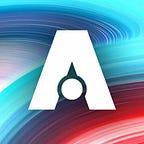What is NFT-PRO and why is it necessary?
In other words: what’s wrong with the current NFT art market?
tl;dr
NFT-PRO is a new standard for art NFTs, designed to protect both artists and collectors. It enables liquid trading of NFTs which is impossible with the standard currently on the market.
Let us elaborate…
When you buy a regular NFT on Ethereum, you basically buy the control over a hash entry (a string of letters and numbers) that is linked to a file. That file is accessible to everyone with internet access, even if it is recorded in the smart contract attached to that NFT that you “own” it. But who do you buy it from? Well, smart contracts are deployed either by marketplaces or by the artists themselves.
So, you’ve decided to buy an NFT from a marketplace. That’s great. But you have to agree to some terms and conditions before bidding on any artworks. Did you know that marketplaces can change their terms and conditions whenever they want? And since the terms under which you first accepted to operate on the marketplace can be altered, what guarantees those same terms will apply after you’ve made your purchase?
Nevertheless, you agree to your preferred marketplace’s T&C and proceed with the bidding — let’s be honest, no one reads T&C anyway. Fast-forward… Congratulations, you have obtained your desired NFT! And now you can resell it. But wait for it, here comes the twist.
The new buyer doesn’t have to agree to any terms and conditions because he can get the NFT on-chain, directly from you — the reseller.
So what does the new buyer of this NFT actually own and what responsibilities does he have? The answer: nothing and none.¹ There is no legal agreement, not even one signed electronically, that keeps him directly liable for anything, especially toward the original artist.
Legal agreements, you say?
You may be wondering: why do we need legal agreements when we have smart contracts? Simply put, because there are multiple levels of rights associated with every art piece and the NFT standard currently on the art market doesn’t include any of these rights.²
For context, here’s a few examples of legal rights that matter to every artist and collector:
- the right to publicly exhibit an art piece
- the right to make profits from an art piece
- the right to multiply an art piece
- the right to modify an art piece
It’s reasonable to conclude, then, that an artist should be able to define what rights he wants to sell with his art and for what price. It also makes sense, you’ll agree, that a buyer should know exactly what he’s buying and what he can legally do with it. In the case of illegal use of art there is always, of course, the court. NFTs are not exempt from well-established art laws and regulations. Deal with it.
So how do we solve this puzzle?
We embed rights into NFT smart contracts — case in point: the new NFT-PRO standard. We enable artists to choose the rights they want to embed into their NFT-PROs, define the value of those rights and tokenize it so collectors can buy the rights they want depending on their preference. Everyone wins and everyone is protected.
We’ll dive deeper into how all this happens technically in future articles.
Visit all.art and read our documentation to learn more about the protocol. Follow us on Twitter for news about the project and join our Discord community to chat with us!
